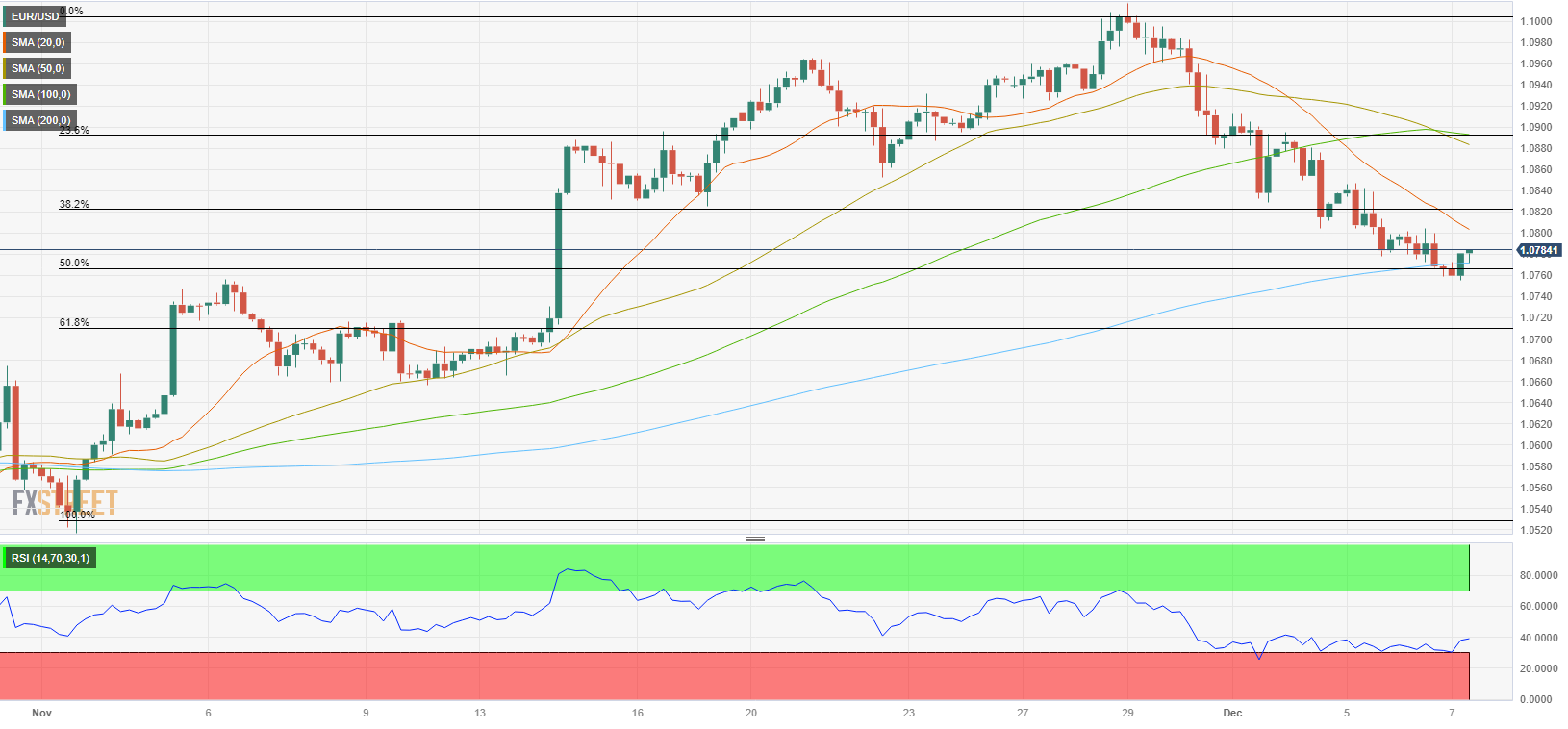- EUR/USD staged a rebound after testing 1.0760 support on Thursday.
- The pair could face stiff resistance at 1.0820.
- Weekly Initial Jobless Claims data from the US will be watched closely ahead of Friday’s jobs report.
EUR/USD regained its traction and rose toward 1.0800 after falling to the 1.0750 area during the early hours of the European session on Thursday. Technical buyers could show interest in case the pair climbs above 1.0820.
Despite the uninspiring employment-related data releases from the US on Wednesday, the US Dollar continued to outperform its rivals as investors opted to stay away from risk-sensitive assets.
Employment in the US private sector rose by 103,000 in November and fell short of the market expectation of 130,000. Additionally, Unit Labor Costs declined by 1.2% in the third quarter, compared to the market expectation for a decrease of 0.9%.
In the meantime, hawkish comments from Bank of Japan Governor Kazuo Ueda triggered a rally in the Japanese Yen (JPY) early Thursday. The sharp decline seen in the USD/JPY pair suggested that the JPY captured capital outflows out of the USD. Although this development helped EUR/USD edge higher, EUR/JPY also suffered heavy losses and limited EUR/USD’s upside.
Later in the day, the US Department of Labor will release the weekly Initial Jobless Claims data. This week’s employment data from the US provided fresh signs of cooling in the labor market. A significant increase in the number of first time applications for unemployment benefits could hurt the USD ahead of Friday’s highly-anticipated Nonfarm Payrolls data.
EUR/USD Technical Analysis


EUR/USD holds above 1.0760, where the Fibonacci 50% retracement of the latest uptrend and the 200-period Simple Moving Average (SMA) on the four-hour chart are located. On the upside, 1.0800 (psychological level, static level) aligns as interim resistance before 1.0820 (200-day SMA, Fibonacci 38.2% retracement). A daily close above the latter could attract buyers and open the door for another leg higher toward 1.0850 (static level) and 1.0900 (100-period SMA, 50-period SMA, Fibonacci 23.6% retracement).
On the downside, an extended slide toward 1.0700 (psychological level, Fibonacci 61.8% retracement) could be witnessed if 1.0760 support fails.




